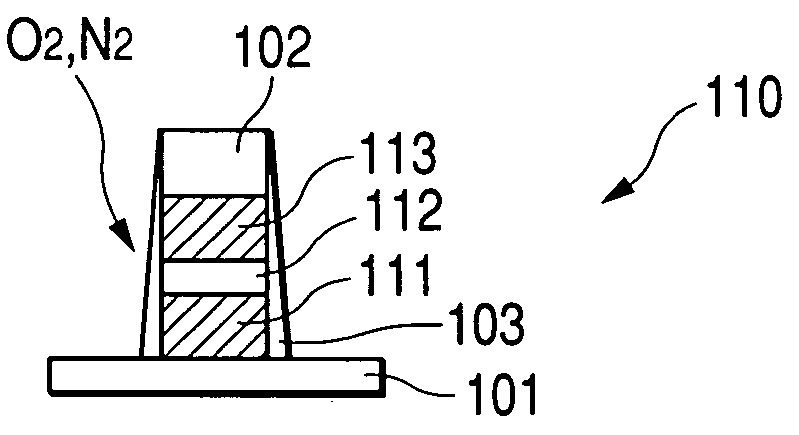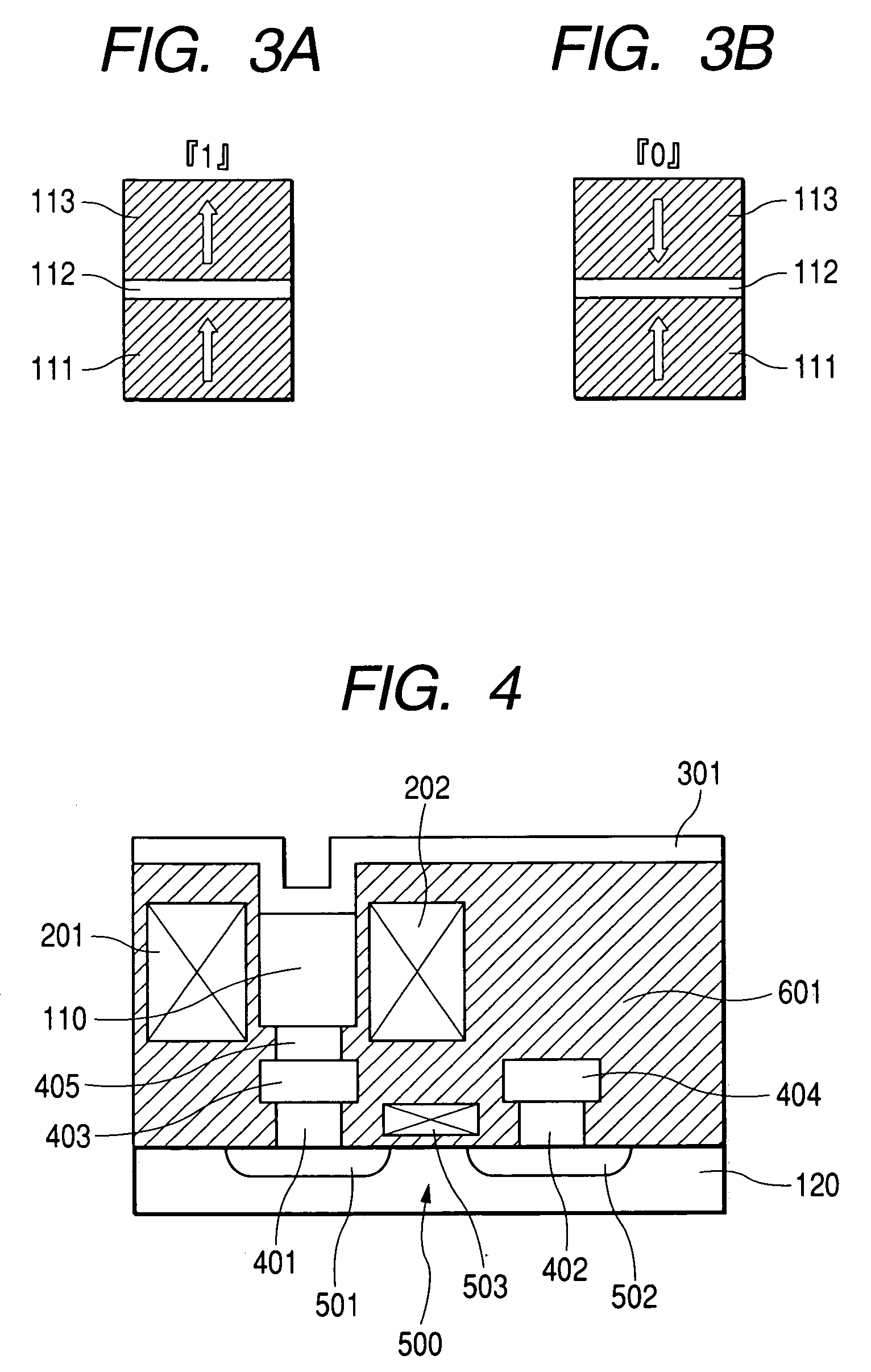Method of etching magnetic material, magnetoresistive film and magnetic random access memory
a magnetic material and random access memory technology, applied in the field of etching a magnetic material, can solve the problems of difficult to prevent a removed substance from adhering to a workpiece, the element size cannot be reduced, and the recording density cannot be greatly improved
- Summary
- Abstract
- Description
- Claims
- Application Information
AI Technical Summary
Benefits of technology
Problems solved by technology
Method used
Image
Examples
first embodiment
[0048] As shown in FIG. 1A, a perpendicular magnetized film of Gd20(Fe50Co50)80 was formed as a first magnetic film 111 by sputtering with a thickness of 10 nm on a substrate 101 formed from a Si wafer and an Al film was then continuously formed by sputtering with a thickness of 1.5 nm. After that, by the plasma oxidation of the Al film in an O2 atmosphere, an oxidized Al film was formed as a tunnel insulating film 112, which is an insulating film. Subsequently, a perpendicular magnetized film of Tb19(Fe50Co50)81 was formed, as a second magnetic film 113, with a thickness of 10 nm on the tunnel insulating film 112. Furthermore, a Pt film was formed, as a protective film (not shown), with a thickness of 5 nm on the second magnetic film 113.
[0049] Furthermore, a resist film 102 having a size of 180 nm×180 nm was formed on the TMR element 110 obtained as described above and the interior of a vacuum chamber (not shown) was evacuated, with this TMR element 110 held in the vacuum chamber...
second embodiment
[0051] In the same manner as in the first embodiment, a perpendicular magnetized film of Gd20(Fe50Co50)80 having a thickness of 10 nm as a first magnetic film 111, a tunnel insulating film 112 which is an insulating film formed from an oxidized Al film with a thickness of 1.5 nm, a perpendicular magnetized film of Tb19(Fe50Co50)81 with a thickness of 10 nm as a second magnetic film 113, and a Pt film with a thickness of 5 nm as a protective film (not shown) were sequentially formed on a substrate 101 formed from a Si wafer, and a TMR element of the same film structure as the first embodiment was formed.
[0052] Furthermore, a resist film 102 having a size of 180 nm×180 nm was formed on the TMR element 110 obtained as described above and the interior of a vacuum chamber (not shown) was evacuated, with this TMR element 110 held in the vacuum chamber. And a mixed gas of CO and NH3 was introduced into the vacuum chamber and the TMR element 110 was dry etched to the surface of the substra...
third embodiment
[0054] In this embodiment, a description will be given about an example in which MRAM uses a magnetoresistive film in which the composition ratio of a transition metal to a rare earth metal of a side wall substance formed on sidewalls of a magnetic layer and a nonmagnetic layer is smaller than the composition ratio of a transition metal to a rare earth metal in the magnetic layer. By correlating the magnetization direction of a magnetic film with “1” and “0” of digital information, it is possible to form a memory device from a TMR element.
[0055] As shown in FIGS. 3A and 3B, in a TMR element in which magnetic films 111, 113 are formed above and under a tunnel insulating film 112, which is an insulating film, to as to be in contact with the tunnel insulating film 112, the resistance value when the magnetization direction of a transition metal contained in the two magnetic films 111, 113 is the same as in FIG. 3A is small compared to a case where as shown in FIG. 3B, the magnetization...
PUM
| Property | Measurement | Unit |
|---|---|---|
| size | aaaaa | aaaaa |
| thickness | aaaaa | aaaaa |
| electric resistivity | aaaaa | aaaaa |
Abstract
Description
Claims
Application Information
 Login to View More
Login to View More - R&D
- Intellectual Property
- Life Sciences
- Materials
- Tech Scout
- Unparalleled Data Quality
- Higher Quality Content
- 60% Fewer Hallucinations
Browse by: Latest US Patents, China's latest patents, Technical Efficacy Thesaurus, Application Domain, Technology Topic, Popular Technical Reports.
© 2025 PatSnap. All rights reserved.Legal|Privacy policy|Modern Slavery Act Transparency Statement|Sitemap|About US| Contact US: help@patsnap.com



